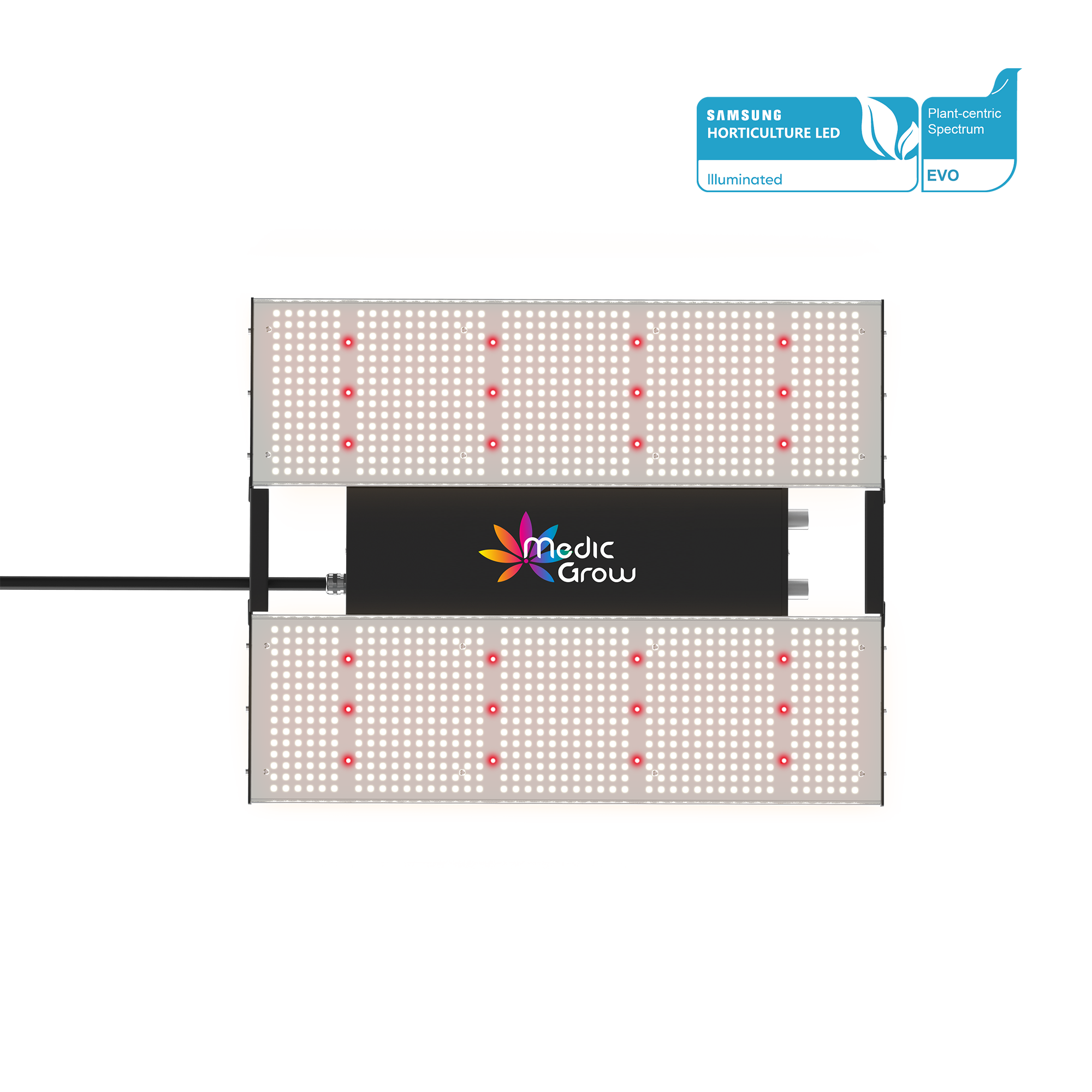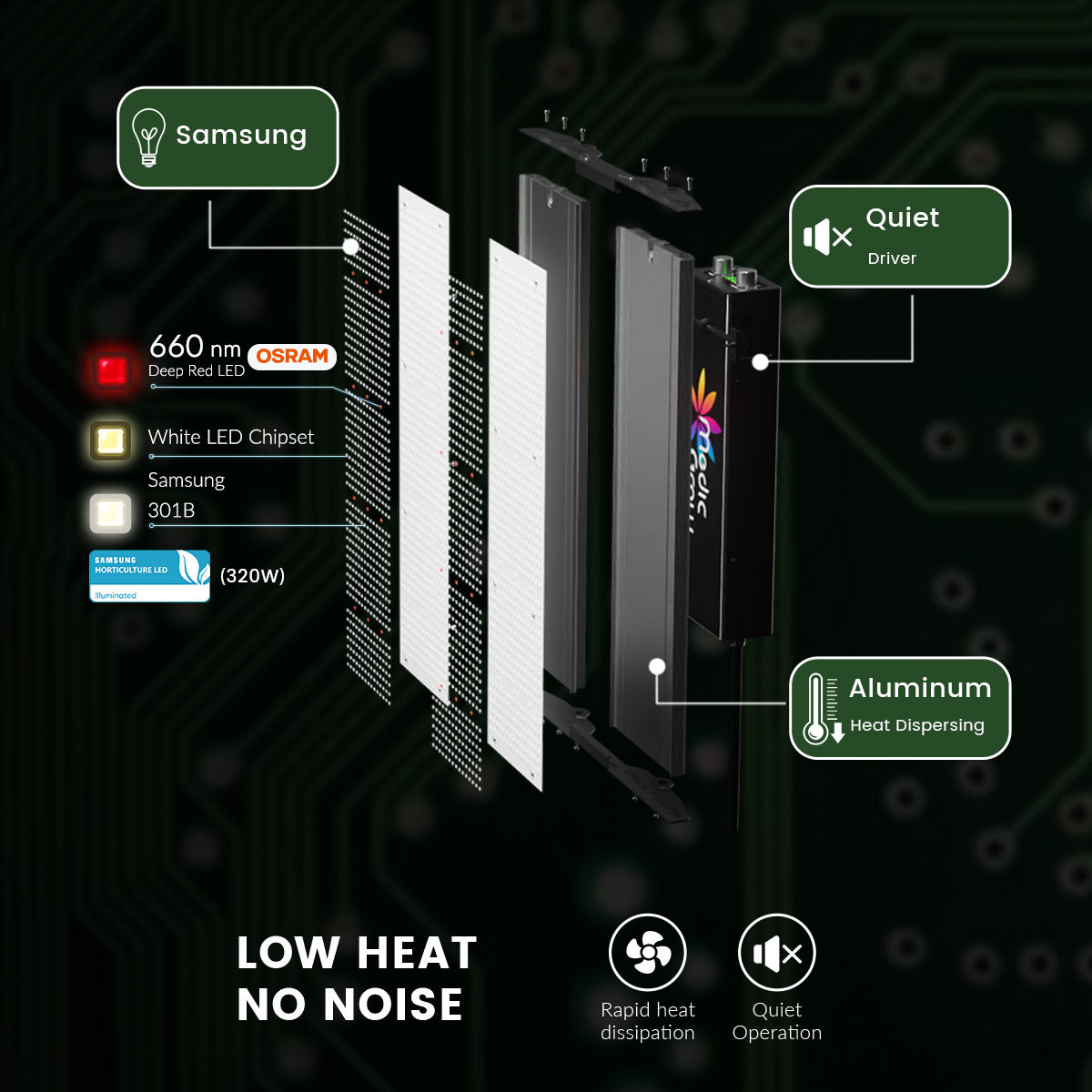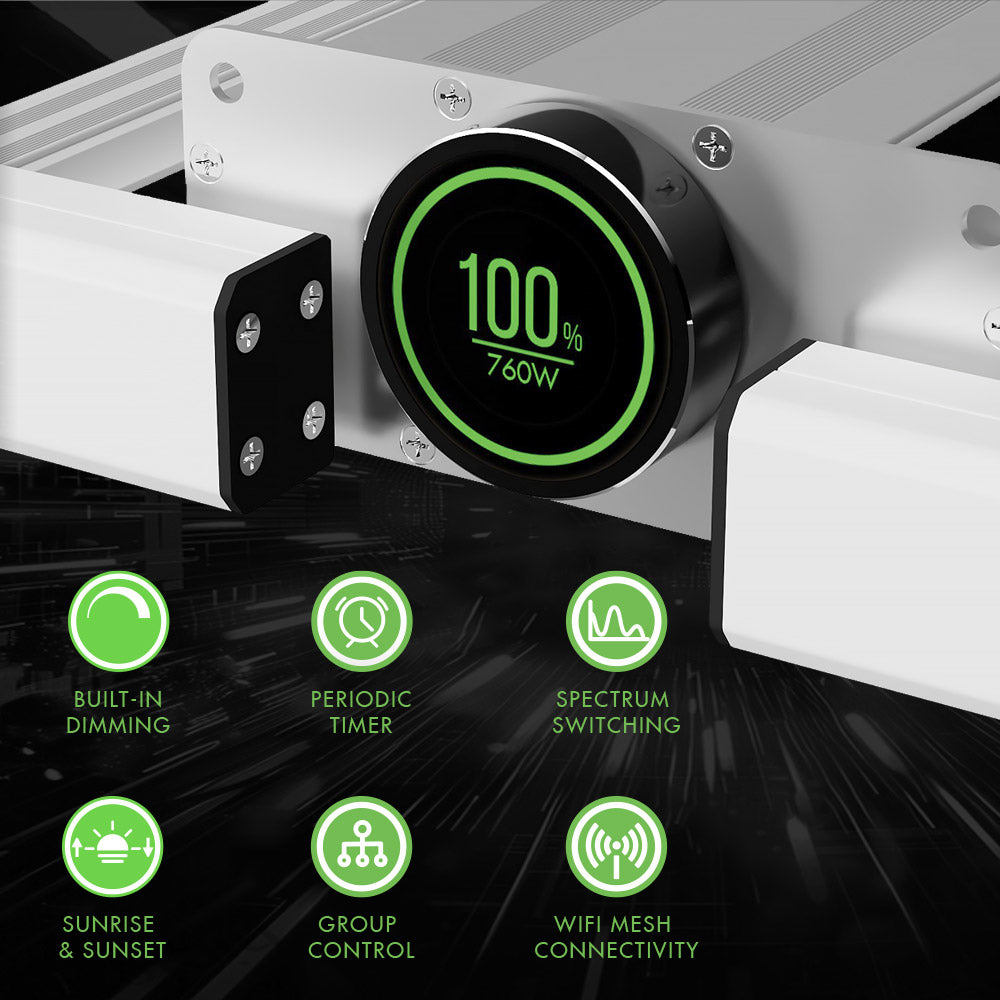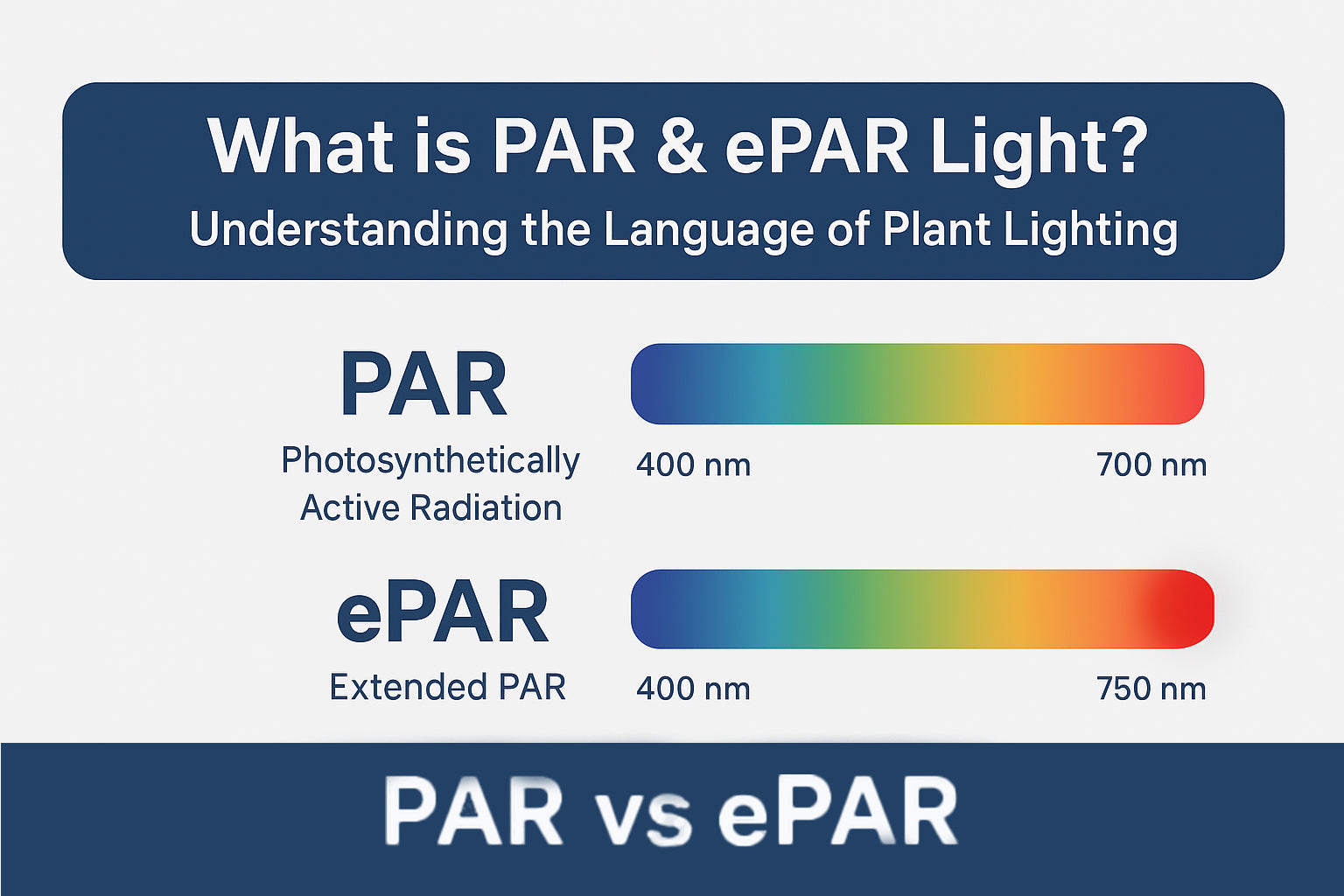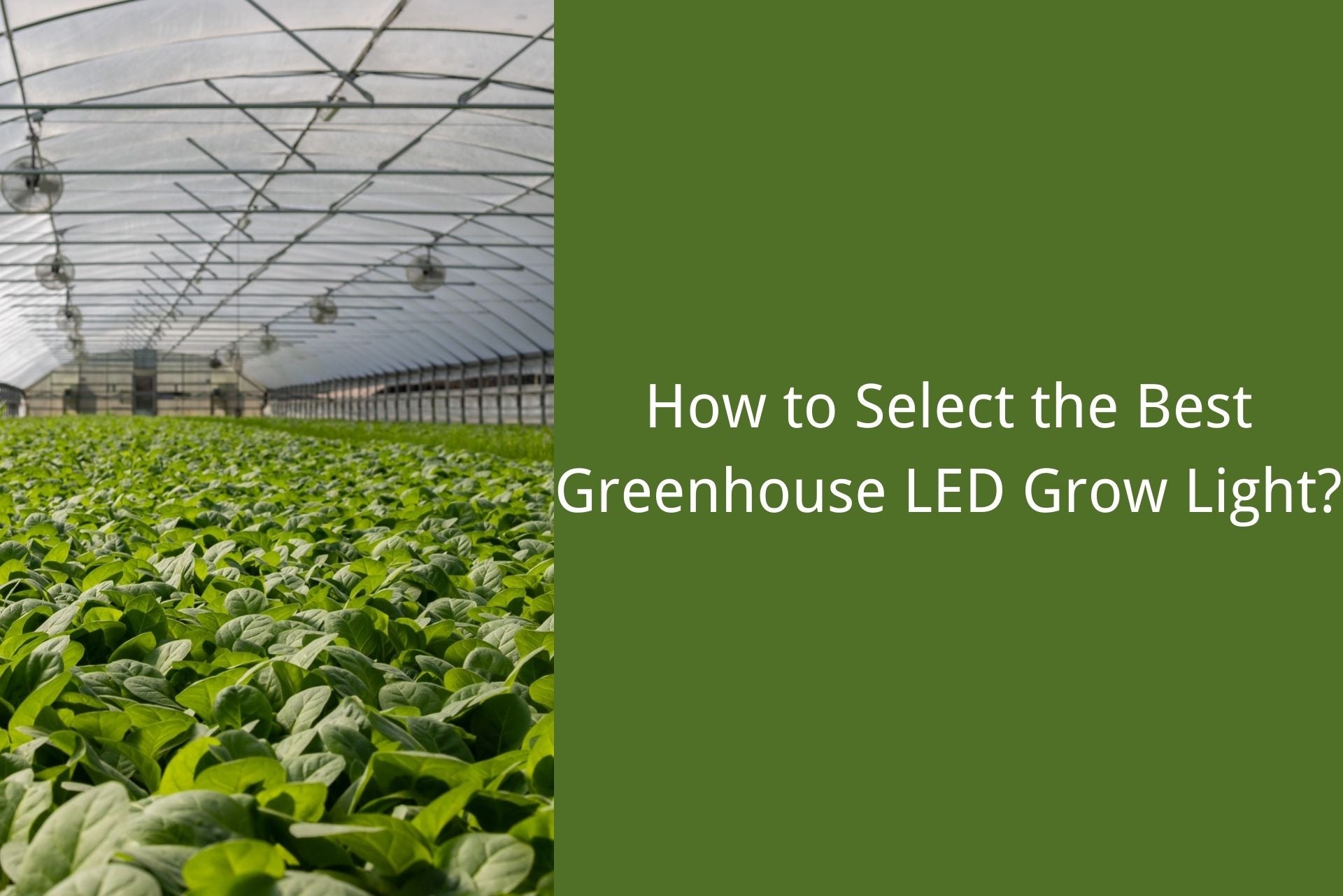
How to Select the Best Greenhouse LED Grow Light?
Agriculture has fast evolved through the years, and greenhouses has soon become a popular trend in the industry. The need to grow plants this way has led to the birth of outstanding grow light innovations to meet the basic growth requirements of plants.
The greenhouse LED grow light is one such innovations that has undoubtedly helped to improve plant development and shorten plants' growth cycles in the greenhouse.
This article will help you choose the best grow lights for your greenhouse and show you what factors you need to put in place to improve the growth of your plants.
- Part 1: What is Greenhouse Lighting?
- Part 2: The Challenge of Selecting A Grow Light For Your Garden
- Part 3: Types of Available Grow Light for Greenhouses
- Part 4: Possible Problems You Might Encounter with Greenhouse LED Grow Light
- Part 5: Making The Right Choice When Selecting The Best Greenhouse LED Grow Light
What is Greenhouse Lighting?
At first glance, greenhouse grow lighting seems like an easy concept. There are, however, many factors that farmers need to consider before venturing into this process:
- The type of crop
- The amount of available sunlight
- The time of the year
Apart from these fundamentals, it is crucial to count the cost of the greenhouse practice. These are a few of those considerations:
- Daily, greenhouses require a minimum of 6 hours of full-spectrum light
- Supplemental lights can only be used when natural lights can’t help plants thrive
- To promote crop yield, supplementing the interior lighting of greenhouses using many high-density grow lights is essential
- These grow lights, e.g., commercial greenhouse LED grow lights, help to extend and maintain growth and the growing season, therefore boosting profits.
There is a vast selection of grow lights available to greenhouse farmers, so it is crucial to understand all the lighting styles available.
The Challenge of Selecting A Grow Light For Your Garden
If you’re a newbie in farming, you may not find it easy to select the best greenhouse LED grow light or any other grow light for your garden.
However, you should never make the mistake of panicking, as this is expected to happen. Most professional farmers have also been stuck at this crossroads, even with years of experience.

In the market, there are too many types of grow lights available, but they all fall into unique categories. When you can study these categories patiently, you will find the best commercial greenhouse LED grow lights or any other grow lights that suit you best.
Making an informed decision involves knowing the pros and cons of these lights and following the guide in this article.
All things being equal, you can make massive profits by using greenhouses to grow plants. Once you win the war of choice, it becomes easier to choose an efficient grow light for your indoor garden and increase plant yields.
Types of Available Grow Lights for Greenhouses
In this section, we will look at the grow lights available for greenhouses.
Fluorescent Grow Lights
Some years ago, fluorescent grow lights were not the most popular options due to their low output, quality, and bulkiness. They were, however, used for germinating seeds and nurturing seedlings at the time.
But today, fluorescent light efficiency has become more efficient and easier to purchase due to their increased availability.
The improvement in fluorescent lights over the years has changed the narratives altogether. 1000W grow lights can generate a similar light spectrum to the sun, hence their efficiency. Some of these colors include:
- Cool lights which are best for young seedlings and cuttings.
- Warm light which is best for fruiting and flowering
These two lights have individual colors of blue and red, but there's a full-spectrum fluorescent grow light, which is the most expensive. It works by sending current electricity to the bulb’s end, which makes the mercury within it produce some light wavelengths as a result.
Incandescent Lamps
These lamps were the first types to be introduced into agriculture. They have less intensity and generate lots of heat; they are best suited for plants that need warm temperatures and low light intensity.
Affordability is why most farmers consider them the best grow lights for the greenhouse.
They aren't the best option in terms of efficiency as their lights cannot serve large areas and can burn the leaves of plants when they’re too close. They do not conserve power as well and are expensive to maintain. All these make them unsuitable for growing plants.
High-Intensity Discharge Grow Lights
Due to their capacity to generate intense light, they've won the hearts of many farmers globally and have soon replaced the previously highlighted lights.
They come in different toes, each having unique qualities, and big bulbs power the light source. They function near reflectors which help to focus the light rays on the plants.
Due to their intensity, they also generate heat, and it is vital to link them to exhausts to expel the heat from the greenhouse interiors.
The most common high-intensity discharge lights are Ceramic Metal Halides, High-Pressure Sodium, and Metal Halides. These lamps have disadvantages; however, they are closest in efficiency to the most recently used greenhouse LED grow lights.
LED Grow Lights
Recently, trends with grow lights have favored 800W LED grow lights, which use Light light-emitting diodes, as the acronym implies. These LEDs emit high light intensities and are loved by farmers globally for their efficiency and longevity.

They do not need extra material to function adequately, unlike high-intensity lamps that need reflectors. LED grow lights for greenhouses proved to be more effective than High-Pressure Sodium lights in scientific research, hence they are the future of greenhouse grow lights.
One other reason why these lights are even more fantastic is that they can be used on a commercial scale.
Compared to other lights, they have an in-built cooling system, making them cool and less harmful to plants; they can also be operated by anyone regardless of their expertise.
They also function by sending light beams into the canopies of plants without emitting lots of heat. They also don’t need to be moved from one place to another to get the best illumination.
They are cost-effective, durable, eco-friendly, and mild on plants. The most important advantage they have over other grow lights is that they can change light spectra to adapt to the plants in the greenhouse.
Possible Problems You Might Encounter with Greenhouse LED Grow Light
There are many advantages to using Greenhouse Grow Lights. However, it is equally important to state some of the issues you may face while using them.
Here are a few of them:
Inadequate lighting
You may compromise the growth of your greenhouse plants if you do not supply optimal lighting.
Since plants are phototropic, they will stretch and deform their growth path to receive the needed sunlight. So, this will divert the energy that should have been utilized for growth towards trying to survive.
Due to this, most of your plants will become susceptible to diseases and may never blossom.
You should ensure that you've installed adequate lights for your plants. An important criterion to be met is proximity to light. Install Greenhouse LED grow close to the seedlings, enough to facilitate growth. The recommended distance is about 1-2 inches.
Some flowering plants require a distance of 12 inches from the light source to properly photosynthesize. You can also place foliage plants at a 36-inch distance from the lights. Vegetables need greater exposure to light, as it helps with the process of fruition and flowering.
Excess lighting
Too much light is harmful to plants. The common mistake most growers make is to turn on the grow lights at all times, hoping that pants will grow much faster.
This is not the case, as it could adversely affect the plant's health. With excess exposure, plants can go pale and burn off. Plants need at least 8 hours of darkness to be in perfect health.
Remember to pay attention to the grow light's wattage and the distance between the light and the plants. Also, it is best to be aware of the nature of the plant, because plants that are grown in tropical forests require fewer grow lights compared to those that grow in dry areas.

Wrong Lighting
Never forget to carefully select the most appropriate grow lights for your plant.
Here’s a little tip:
- Only use red lights for flowering plants
- Certain blue lights are known to promote bushy growth
Selecting the best LED grow lights for the greenhouse is vital to get the best plant growth. Consider the heat generated by the lights, the nature of the plants, and the versatility of the grow lights.
Two of the aforementioned lights stand out for different reasons; fluorescent grow lights for their cost-efficiency and temperature; and LED grow lights for their versatility and adequacy.
Unequal Distribution
The advised ratio for light distribution is 20-40 watts for every square foot of the greenhouse. So, it’s not enough to have greenhouse UV plant lights or the best available grow lights; it is more important to install these lights properly.
You also need to ensure the light penetrates all the leaves within the greenhouse, space the plants evenly, and prevent bigger plants from overshadowing smaller ones.
The size of your greenhouse ultimately affects the kind of grow lights you will use.
- For larger greenhouses, the best grow lights will be the HIDs or fluorescent lights.
- LED grow lights also work well in larger greenhouses if they're evenly distributed.
Making The Right Choice When Selecting The Best Greenhouse LED Grow Light
Greenhouse is a growing industry, and the process is fun altogether, so it is something you will greatly benefit from if you wish to explore the path.
Confusion is the main issue most beginners face at the initial stage, which is crucial and determines the entire journey for growers. However, once you can grow past this stage, it will be easy to jump over other hurdles with less resistance.
There is a wide variety of grow light models available which you can choose from. The factors that ultimately guide your decision here include the scope of the business, the kind of plant, and the budget. However, with easy analysis, it’s possible to determine which one of the lights will best suit you.
Working with a small greenhouse and budget means you cannot afford exotic grow lights. So, the best option would be compact fluorescent lights which are not so expensive and can be replaced and installed easily. This way, you can get the much-needed results.
Ultimately, if you desire a highly efficient grow light with proper intensity and longevity, settle for greenhouse LED grow lights. They may cost you extra cash, but they surely get the job done.
Conclusion
It is no longer news that the market trend favors LED grow lights. Using the criteria of plant type, budget, and greenhouse size, the next most important step is to choose the best LED grow lights for the greenhouse. A great deal of adventure awaits you after you've made the right choice.
Get the best greenhouse LED grow light today!
Related Posts
Are LED Grow Lights Harmful to Humans?
Full Spectrum LED Grow Light: All You Need To Know
Grow Light vs Regular Light: Can Any LED Light be Used as a Grow Light?
Featured Products
Blog Posts
Contact Us with Any Idea!
- Choosing a selection results in a full page refresh.
!















